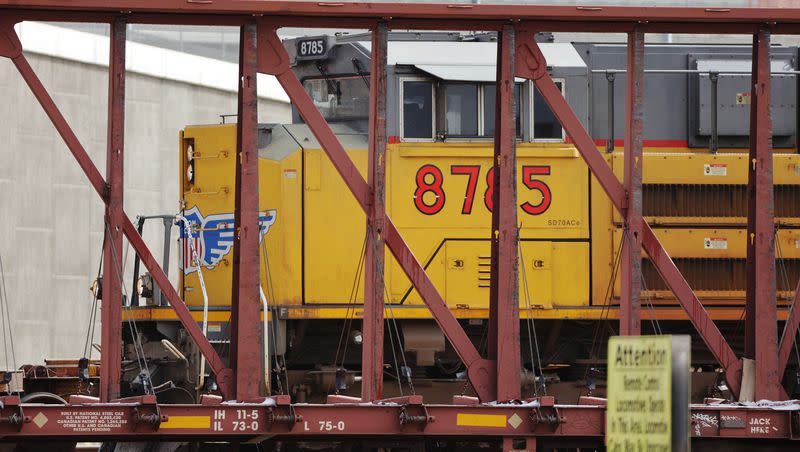Bill would infuse money into energy infrastructure in hopes of cutting emissions

The suite of industries making high-dollar investments in energy infrastructure is being expanded under a proposal that received unanimous endorsement from a legislative committee on Thursday.
HB124, sponsored by Rep. Carl Albrecht, R-Richfield, encourages significant investment in energy technologies that include geothermal, nuclear, utility-scale battery storage, hydroelectric storage and even water purification projects that would help revitalize the Great Salt Lake.
The bill was heard before the Senate Natural Resources, Agriculture and Environment Committee.
Projects located in counties of the first or second class would need to make an investment of $50 million to be eligible for a tax credit, while other projects would have to pony up $25 million.
Albrecht even amended his bill to include potentially eligible money to incentivize replacement of Union Pacific “switcher” engines to utilize the cleanest burning fuel, or Tier 4, to shave emissions.
The pollution from those diesel engines has long been a concern of lawmakers as they work to reduce emissions in an already overburdened air shed that remains in struggles with the U.S. Environmental Protection Agency on meeting federal standards.
In 2022, there was an effort to force Union Pacific to “play nice” on the conversion of some engines at the Roper Rail Yard in Salt Lake City that was ultimately shelved as negotiations continued.
Related
“We added locomotive engine conversion projects, as you know because here in the city they’ve got some freight switchers that caused some pollution and other environmental problems,” Albrecht said, describing some changes to the bill.
The bill also makes available money under a certain set of criteria for mineral processing projects, which Albrecht said are sorely needed in the state.
Utah has 28 of the 35 minerals deemed critical by the federal government, but those minerals are processed overseas.
Related
Albrecht’s measure also ropes in “water resource forecasting projects,” which would include permanent data collection systems designed to improve the forecasting of the availability of seasonal water due to flash floods and other severe weather events.
Rikki Hrenko-Browning, president of the Utah Petroleum Association, praised the measure as another way to tamp emissions in a climate in which it is becoming increasingly difficult given the federal regulatory hurdles.
Refineries have already invested tens of millions of dollars in pollution control upgrades, she added, and finding more ways to curb emissions is a challenge. She said operations on federal lands, as an example, are making multimillion-dollar investments to reduce harmful pollutants.
Related
“We’re getting to a point where it’s very hard to find cost effective emission reductions in our air shed and we’re going to face some very real implications, unfortunately, from a federal regulatory perspective unless we can find creative ways to further reduce emissions,” she said. “And the cost per ton for reducing some of these rail emissions is much lower and more viable.”

